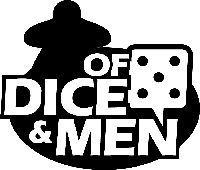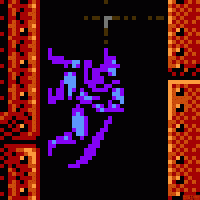T.I.M.E. Stories is something of an odd design. It's odd in that it doesn't do anything really well. It's odd in that it doesn't do anything particularly innovative. It's odd, because it's just well, odd. This game shouldn't exist. It shouldn't be popular. Yet, here we are.
[Disclaimer - This is going to be a 100% spoiler free review. For those that don't know T.I.M.E. Stories is a co-operative story telling game and part of its appeal is finding out what lies within its sterile looking white box. I will brush upon some mechanics and ideas, but at no point will I divulge any SPECIFIC information about the plot.]
T.I.M.E. (already tired of typing this insufferable acronym) Stories is what you get when you combine the following things: Fighting Fantasy Books, Myst, Quantum Leap, Groundhog Day, and probably drugs. Does this goulash of ingredients sound appetizing? Well if you're in the mood for the boardgame equivalent of platypus stew then go grab a spork.
So the premise of T.I.M.E. Stories is that you and your friends are time agents of sorts. You're tasked with traveling to a specific period in time to accomplish SOMETHING. You start off in the future where you get a mission briefing and then you're off. For the base game you'll be travelling to the roaring 1920s and staying in a lovely asylum for the insane. Right off the bat your conscience is zapped into some people that are deemed "unimportant" to time. The game states that these "receptacles" can be taken control of without fear of screwing up the space time continuum or some such nonsense. Basically it's a convoluted way of saying, "It's character selection time!" So you all pick your receptacles (I swear I'm not making this up) which have special abilities, stats, whatnot, and you begin your journey.
The game/story is a conveyed via a large deck of oversized cards. There will be a map and as a group you must decide where to go. Once you select a place to travel, you dig through the deck and find the cards corresponding to the location. You then take the cards and lay them out so that they create a large picture of your new location. Neat! At this point you all decide where you want to individually investigate. You flip over the card that you placed your pawn above and secretly read what you discover. It might be text conveying a conversation. It could just be a picture. It could be anything really. If you're investigating alone you cannot tell people word for word what you found. No, the game wants you to DESCRIBE what you're experiencing. Sometimes you will come across a challenge or a fight that requires you to roll some dice to succeed. This requires a very simplistic system of rolling stars for successes to defeat the challenge. The kicker to all this is that each time you act, explore, or move locations you will need to spend "Time Units". You start off your mission with a certain amount of time units and if you ever run out you'll lose. And that's it. That the whole game. You explore, you discuss things, you occasionally roll some dice and you try to accomplish your goal before time runs out.
Mechanically speaking, T.I.M.E. Stories is absolute garbage. There is NOTHING going on in its design that hasn't been done before. Its primary hook is the giant deck of cards that tell a singular story. Yes, every time you play the game the locations and events will always be the same. This is done on purpose because you'll likely fail and need to repeat the mission Groundhog Day style. Using what you previously learned you'll dive back into the deck armed with knowledge on how to accomplish your goal (hopefully quicker).
I can tell you right now, if you're looking for a great, well written, gripping, story that is going to blow your mind then you need to adjust your expectations. The story telling is primarily of the "flip over a card and do what it says" variety. Again, it's all very basic stuff that has been done in probably a hundred other games.
Despite its antiquated design choices and rudimentary gameplay I sort of love T.I.M.E. Stories. This game baffles me. It's not a good design and yet I have an incredibly fun time playing it. Let me try to explain myself. The first thing I love about the game is the story. Yes, I know I said that it was bad a few lines up and I stand by that statement. However, it's bad in the best possible way. The plot is like something out of a Playstation 1 era Resident Evil game. It's like it was ripped out of the mind of a 12 year old boy who mixed all of his favorite ideas together during a Pixy Stix bender. As a lover of trashy cinema and B films this type of garbage speaks to me in a big way. The best part is that the publisher is trying their damndest to make their B movie turd seem like a blockbuster. Imagine some crummy genre script that was somehow green-lit with a 100 million dollar budget and you're starting to get the idea of what you're gonna experience.
Thankfully the best moments aren't what you read via the cards. No, T.I.M.E. Stories is primarily a game about COMMUNICATING and that is when it shines brightest. Not being able to expicitly divulge information on the card you look at is a stroke of brilliance. Since you're working together to accomplish something, relying on information from another player can sometimes lead you astray. Couple this with the unique characters that you're playing and the experience really starts getting fun. You see, the "receptacles" that you play all have distinct character traits that will directly affect how you play the game. These distinctions are well executed and many times the choices you make on your own and as a group are dictated by the character you're playing. This often leads to some really hilarious table talk and ridiculous situations. Despite it looking like a sterile exam room, T.I.M.E. Stories is the kind of game best played with some cheap beer and good friends.
Now the game only comes with a single scenario. I find it amazing how people are actually fine with this. You're paying $40 for one really fancy choose your adventure game. I remember when Mansions of Madness came out with 5 scenarios people complained that it was too few. And those were designed to be slightly re-playable. T.I.M.E. Stories on the other hand? Yeah, replay value isn't high on this. However, that isn't to say it's not there. I will gladly re-play the base game scenario with different groups of friends. Obviously this means I would have to zip my mouth and not give away any information, but it's still doable. Your mileage will certainly vary though.
The absolute best thing…the single cleverest thing about the whole design is its blatant, purposeful, blandness. Everything from the packaging to the ruleset follows through with this ignis-fatuus. It's all done with surgical precision and purpose. From the first time you open the box every visual you drink in is meant to be as vanilla as possible. At first this seems like a terrible choice, however it's actually INCREDIBLY intelligent on behalf of the publisher. I'll let you in on T.I.M.E. Stories biggest secret; this isn't a game about time travel. Nope, the quasi sci-fi façade and clean white packaging is simply done to provide the most malleable toolkit for the designers to play with. T.I.M.E. Stories is about whatever it wants to be. It could be about dinosaurs and cavemen. It could be about witches on Moon-base Omega. All you need to do is insert a fresh deck and the game engine COMES ALIVE to spit out whatever genre it wants. Brilliant! Even the tokens in the game are merely simple colored chits that can represent anything. They could be food, ammo, hit points, or mana. I'm really impressed with how they pull this trick off. Hell, I'm convinced that the game mechanics being rudimentary is part of this master illusion. By keeping things familiar and basic it allows the game to become clay in the designer's hands. They're free to mold it into whatever they want over and over again. The plain white board and simple colored bits fade away and the deck of cards transforms the game into whatever the designers can think of.
This all comes at a price. It makes T.I.M.E. Stories incredibly fragile. The enjoyment is going to be 100% based on the scenario you plug into the engine. If it's a snooze then you're screwed. Also, the deck of cards is so vital to the game that Asmodee needs to be extra careful with proofreading/production. Any printing errors or card misprints that break a scenario will cause fans of a game like this to panic. Again, just look at Mansions of Madness to see what printing errors can do to a game's reputation. Still this hasn't been an issue yet, but it's something worth noting.
So do I recommend T.I.M.E. Stories? Yes, I would suggest trying it out at least once especially if you're a fan of something like Sherlock Holmes: Consulting Detective. It's not a classic, but it wins BIG points for its chameleon chassis. More importantly, I think it's the closest anyone has come to cracking the code of creating a successful boardgame/RPG hybrid. I'll warn you that if you're looking for something deep and rewarding with the narrative you're bound to be disappointed. This is B movie magic with fistfuls of silliness. Expect badly written dialog, absurd moments, and a Roger Corman quality script. T.I.M.E. Stories mostly only gives back what you're willing to put into it. You need to play it loose and get into the pseudo role playing that it encourages. If you allow it you'll encounter some good belly laughs and a few memorable nights. You can't ask for more than that.
What does the Scale-o-Matic 6500™ say?
On a scale of The Butterfly Effect to Back to the Future
T.I.M.E. Stories rates as Time Cop
----------------------------------------------------------------------------
Designer(s): Manuel Rozoy and Peggy Chassenet
Publisher: Space Cowboys / Asmodee
Year Published: 2015
Player Count: 2-4
Length: 60-120 minutes
 Games
Games How to resolve AdBlock issue?
How to resolve AdBlock issue? 

























